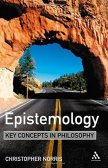 This post gives a glimpse of “Eternity in Their Hearts” by Don Richardson, who is recognized for his anthropological and linguistic work among the Sawi people of Irian Jaya.
This post gives a glimpse of “Eternity in Their Hearts” by Don Richardson, who is recognized for his anthropological and linguistic work among the Sawi people of Irian Jaya.
Edward B. Tyler’s theory that monotheism evolved has been refuted for a long time. The theory goes like this: Belief in the soul emerged from pondering dreams, etc.; spiritism/animism emerged when they applied the belief of a soul to other entities; the stratification of classes in developed societies suggested an aristocracy of “gods” ruling over run-of-the-mill souls and spirits; and the monarchies suggested monotheism. Andrew Lang, Tylor’s favorite pupil, found out about the refutations from the work of A.W. Howitt, Mrs. Langloh Parker, and others, and published “The Making of Religion” in 1898. He was virtually ostracized and ignored. Schmidt’s “The Origin of the Concept of God” by 1955 had over 4,000 pages of evidence, but Tyler’s theory is still perpetuated to this day by people who either are uninformed or ignore the refuting evidence.
Nicias of Athens, “the city glutted with gods,” because it takes an infinite number of “gods” to fill an infinite God’s shoes, asked the Creton hero/poet/prophet Epiminides to help them end their plague, because none of their gods would end it. In the very beginning of the morning, Epiminides put out a flock of hungry sheep and sacrificed the ones who laid down instead of grazed, and the plague ceased. The alters were dedicated to “agnosto theo,” the unknown god. Zeus used to be a valid word for God, but it gradually was corrupted, and so was substituted with the Greek word “Theos” (“agnosto theo”). Paul of the New Testament affirms that their unknown god is God (Acts 17:16-34). Plato speaks of one of Epiminides’ fulfilled prophecies, and Paul refers to Epiminides as a prophet when he quotes his poetry in Titus 1:12-13.
Pachacuti was an Incan king from A.D. 1438-1471. He was so committed to sun (Inti) worship that he rebuilt Inti’s temple at Cuzco. He later began to question his god’s credentials. If Inti were truly God, no mere created thing could truly dim his light. Pachacuti remembered what his father told him about Viracoacha, Creator of all things, an almost extinct memory of his own culture. The only trace left was one shrine to Viracoacha named Quishuarcaneha, and the memory passed on from previous generations. Worship of Inti and other gods were departures from a purer original belief system. Pachacuti put a stop to Inti-worship, but unfortunately only among the upper class, which was obliterated by Spanish conquistadors. A mini-reformation died in its infancy.
“Eternity in Their Hearts” gives many examples of peoples who had very biblical customs (you’ll have to read the book for more details), and many examples of peoples who believed first in a Supreme Being, some who remained faithful, never converting to false religions:
(1) The Santal of India, believe in Thakur (genuine) Jui (god). A Santal elder named Kolean told of their oral tradition of creation, the fall of man, the Great Flood, the dispersion of mankind, and how they strayed away from worshipping Thakur Jui.
(2) Ethiopia’s Gedeo people believe in Magano, omnipotent Creator of all that is. One Gedeo man named Warasa Wange prayed a simple prayer asking Magano to reveal Himself to the Gedeo people and was given a prophetic vision. He saw two white-skinned strangers erecting flimsy shelters under a Sycamore (skipping detail). A voice told Warasa they would bring a message from Magano and to wait for them. He understood part of the vision (skipping detail) to mean he would stand in identification with these strangers and their message. Eight years later that prophecy was fulfilled, and Warasa establishes churches with the two missionaries.
(3) Central African Republic’s Bantu Mbaka believe in Koro (the Creator in several Bantu languages). A missionary’s son grew up listening to the Mbaka tell how Koro sent word to their forefathers that He has already sent His Son into the world to accomplish something wonderful for mankind. The forefathers turned away from the truth and they eventually forgot what it was that His Son was going to accomplish. Many generations tried to discover the truth about Koro’s Son, but could only learn that messengers would eventually come to restore that forgotten knowledge, and that the messengers would probably have white skin. The Mbaka had their version of a Levitical clan who kept this memory alive, and many Mbaka rites of passage show Judeo-Christian parallels (skipping detail).
(4) The Chinese believe in Shang Ti (may be linguistically related to the Hebrew term Shaddai, as in El Shaddai, the Almighty), the Lord of Heaven. Gradually their ideas of Shang Ti became distant, and only the emperor was allowed to worship Shang Ti. It wasn’t long before Confucianism, Taoism, and Buddhism came rushing in to fill the vacuum. The Chinese writing system has symbols that are ironically similar to the Gospel, although I personally do not think that is conclusive.
(5) The Koreans believe in Hananim, the Great One. A Tan’gun tradition states Hananim had a Son who desired to live among men.
(6) The Karen of Burma believe in Y’wa, and never converted to idolatrous Buddhism. When they were visited by an English diplomat, they thought he was the white brother they had been waiting so long for, and asked him if he had brought the lost book. This incident was mentioned in a manuscript published 32 years later. In 1816, a Muslim traveler gave the Karen a book as a gift, the Book of Common Prayer and the Psalms. They mistakenly worshipped it, waiting for the day when a teacher would come to their village and help them understand the book. 12 years later, a Karen man Ko Thah-byu got a job from the white brother, who was coincidentally translating the Bible into Burmese. The Karen’s prophets (Bukhos) of the true God taught the Karen hymns about Y’wa, repeated oral traditions of creation, the fall of man, sacrificial offerings, the return of Y’wa, the return of a king, warning against idolatry, man’s duty to love God and one’s neighbor. The Karen’s awareness of basic spiritual facts may have matched that of history’s average Jew or Christian, and may actually predate them. (There is much detail left out.) The Karen folk religion may be the purest left on earth in modern times.
(7) The Kachin of Burma believe in Karai Kasang, the Creator, also called Hpan Wa Ningsang, Glorious One Who Creates, or Che Wa Ningchang, One Who Knows. The Kachin also believed that Karai Kasang once gave their forefathers a book which they lost, and they were open to the possibility that it would one day be restored.
(8) The Lahu of Burma believe in Gui’Sha, Creator of all things, who had given their forefathers His law written on rice cakes they had to eat during a famine. They had prophets who kept the memory of Gui’Sha alive. They expected a white brother with a white book with the white laws of Gui’Sha.
(9) The Wa believe in Siyeh, the true God.
(10) The Lisu of China also believe in the true God (no name given), waiting patiently for a white brother to bring them a book of the true God written in Lisu language (they had no alphabet, let alone printed material), and they believed they would one day have their own king (they had been subject to suppressive Chinese rule for many generations.)
(11) The Shan and Palaung Peoples of Asia verbally preserved a destroyed Buddhist scripture which quotes Guatama as saying, “After me will come Phra-Ariya-Metrai (the Lord of Mercy). When he appears, my followers must all follow him.” (However, there is a separate belief that the Lord of Mercy is the fifth manifestation of Buddha, and it should be clarified that it is not truthful to say Jesus is the fifth manifestation of anybody.)
(12) The Kui of Thailand and Burma built houses of worship dedicated to the true God, in anticipation of His messenger who would bring them the lost book. No idols were placed in these places.
(13) India’s Naga believe in Chepo-Thuru, the God who sustains everything (Chakesang dialect), also called Gwang (Konyak dialect). They never represented Chepo-Thuru with idols, and they had amazingly biblical customs. One Naga tribe, the Rengma, specified that the Supreme Being gave their forefathers His words on animal skins, but dogs ate them up. The Naga culture had a prophetess in the 1600’s, Kamhimutulu. The details of her prophecy reportedly reveal remarkable conformity to Biblical principles, and to events which began to take place among the Naga at the beginning of the twentieth century.
(14) India’s Mizo believe in Pathian (Holy Father), and offered sacrifices to Him alone. They also possess traditions of a sacred book given by Pathian, lost by their forefathers.
(15) North American Indians believe in the Great Spirit, and “EITH” discusses the Sacred Four.
He has made everything beautiful in its time.
He has also set eternity in the hearts of men;
yet they cannot fathom what God has done from
beginning to end.
He has also set eternity in the hearts of men;
yet they cannot fathom what God has done from
beginning to end.
(Eccles. 3:11)








